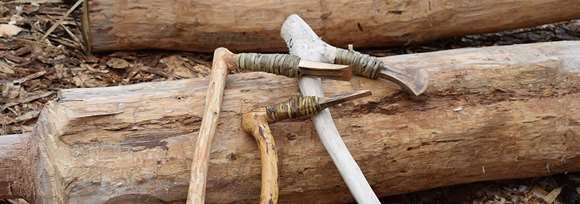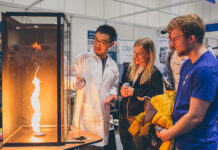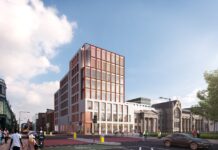A Bronze Age house is being reconstructed by English Heritage volunteers at Beeston Castle in Cheshire.
The volunteers have used authentic tools and archaeological evidence to recreate the house and based the reconstruction on recent discoveries at the Bronze Age settlement at Must Farm in Cambridgeshire. They’ve also drawn on earlier evidence found at Beeston Castle itself.
People lived on the rocky Cheshire crag long before the existing medieval castle was built, and in the late Bronze Age it was an important defended settlement and metalworking centre.
Although little visible evidence remains of this early activity, in the 1970s and 80s archaeologists discovered traces of post-holes for what was called House Six. This was a thatched Bronze Age roundhouse with walls of wattle-and-daub – a mixture of twigs, earth and clay. Bronze Age objects such as axes and knives were also uncovered during this time.
To recreate the house, a team of more than 60 volunteers come from diverse backgrounds including dentistry, farming and nuclear physics.
The 15 vertical posts of the roundhouse have been erected, with the horizontal wall plates lifted to form the framework of the house.
House Six’s postholes are providing valuable archaeological evidence for the reconstruction, such as the size and layout of the building (the original house contained a hearth), the material used to make the floor, and the size of the stakes.
The volunteers are also making use of authentic tools, recording axe strikes and post-hole depths to help increase our understanding of the Bronze Age and its construction methods.
English Heritage curator, Win Scutt, said:
‘Beeston is one of the most important Bronze Age sites in the North West of England and research over the past few decades paints a fascinating picture of a community who lived and worked there. What this project aims to do is bring that research to life – our reconstructed house will give visitors a vivid sense of the Bronze Age at Beeston.’
Luke Winter, the experimental archaeologist leading the project on behalf of English Heritage, said:
‘It is so rare to have a chance to recreate a Bronze Age building where it once stood, and thanks to our inspiring team of volunteers we are making great progress. And by using authentic tools and recording axe strikes and post depths, they are helping to increase our understanding of Bronze Age construction methods.’







